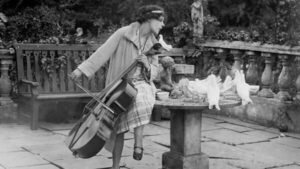Bird Lore
July 27, 2021
ALAN writes:
I would like to pose this question to TTH readers who are bird fanciers or students of bird lore:
Why does a Canada goose become separated from its mates and wander alone? I have seen such a solitary goose at a nearby park. He lingers near ducks or near four other geese of different breeds.
He (or she?) has learned to trust me. Whenever I walk in the park, I try to become part of the silence that birds appreciate. In that setting, solitary goose will approach me and wait patiently, expecting me to offer him something to eat. I have seen him there on half a dozen days recently. But unlike the ducks and other geese, he has never uttered a sound. The impression I get is that he is mute. Is that possible? Is that why he wanders alone, apart from his kindred geese?
Many comments and essays at TTH have concerned the beauty and wonder and delight of birds. Here is yet another to add to them—and, for a brief moment, to help us get as far away as we can from the ugliness of life today:
One evening a young woman went out to her garden to get away from the busyness and commotion of daily life—and to play her cello, alone. But it turned out that she was not alone. When she played her cello, she became aware that a nightingale was warbling from a nearby branch. When she stopped playing, he stopped singing. When she resumed playing, he resumed singing, as if the two of them had formed a duet.
Cellist Beatrice Harrison lived in Surrey, England in 1924 when she persuaded the BBC to do a live broadcast from her garden.
“There, in the darkness, under an oak tree, surrounded by rabbits, birds, microphones, recording engineers and wires, Harrison performed Ireland’s adopted anthem “Danny Boy” accompanied by the sound of nightingales and broadcast it to a radio audience of a million people.”
[John Anthony Brennan, “The Cellist, the Nightingale, and Danny Boy,” at The Wild Geese, here]
I wish I could have been there to hear it.

— Comments —
Kidist Paulos Asrat writes:
Alan asked a question about geese.
My observations here in Ontario is that geese join up with two groups: the group with which they go (or went) on a migratory flight across North America (and back), and with a mate and later on their goslings. A solitary goose is one which likely has neither of these functions to perform.
Possibly the goose that Allan saw is one that is separated because none of these roles are necessary, or fit in.
I often see geese alone much later after these two events have occurred.
